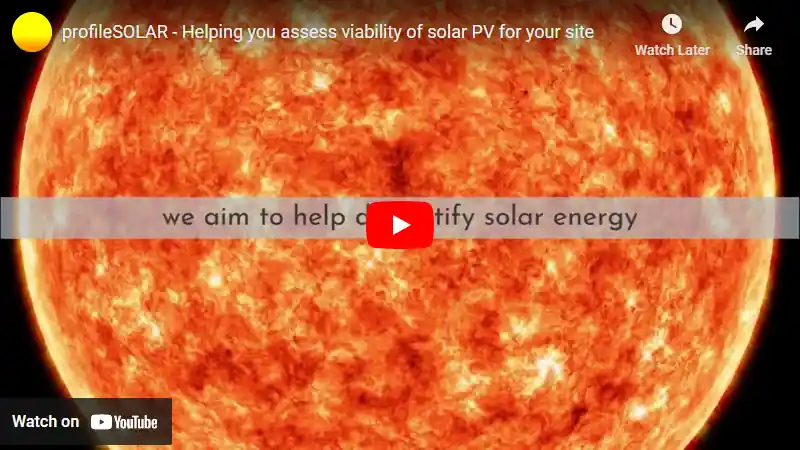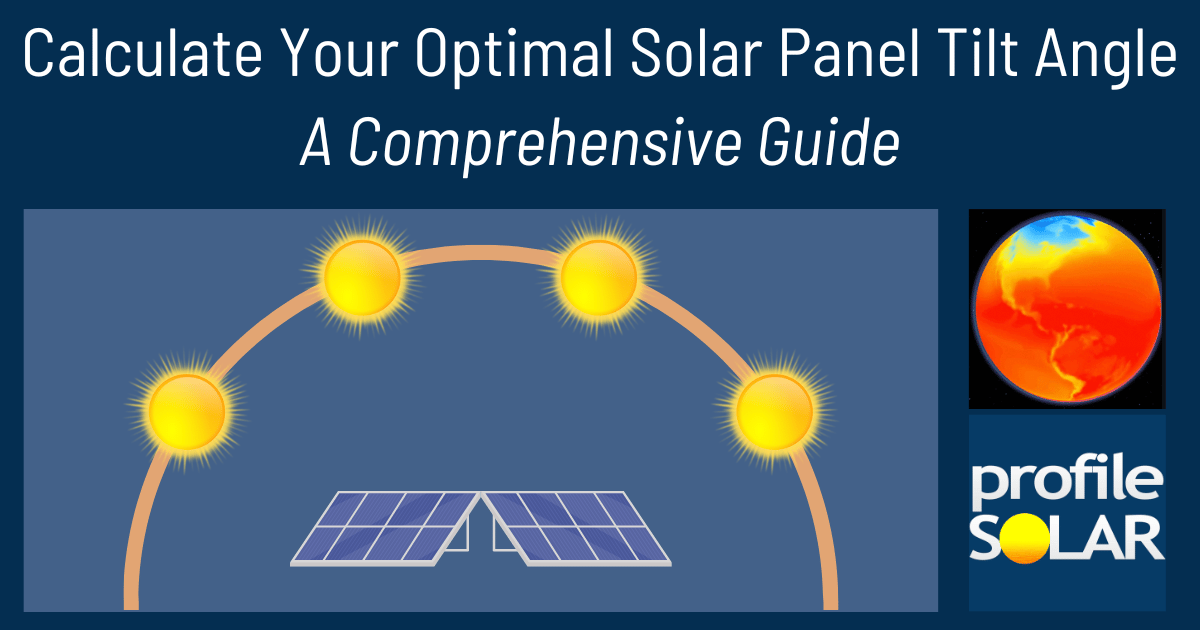

Hartford, Connecticut can be a good place for solar energy production but it's not the best. It lies in the Northern Temperate Zone, which means it experiences all four seasons with varying amounts of sunlight throughout the year.
In summer and spring, Hartford gets quite a bit of sun. You can expect around 5.84kWh/day per kW of installed solar in summer and 5.62kWh/day in spring. This is when your solar panels will be most effective at generating electricity.
Autumn sees a drop to about 3.51kWh/day per kW, while winter has the least amount of sunlight with only about 2.07kWh/day per kW expected due to shorter days and often cloudier weather.
To get the most out of your solar panels year-round in Hartford, they should ideally be tilted at an angle facing south by 36 degrees from horizontal level (this is because Hartford is located north of the equator).
However, there are some challenges that could affect solar energy production here:
1) Weather: Connecticut experiences various types of weather including snowfall during winter months which may cover your panels reducing their efficiency or even causing damage if heavy enough.
Preventative Measures: Regular maintenance and cleaning especially after snowstorms will help keep them running efficiently as well as installing systems that allow for easy removal or melting off accumulated snow on panels.
2) Cloudy Days: More frequent cloudy days particularly during autumn/winter months reduce direct sunlight reaching your panels thus lowering output levels.
Preventative Measures: While you cannot control cloud coverage, using high-quality PV cells that perform better under diffuse light conditions could slightly improve performance on cloudy days.
3) Trees/Shade: If there are tall trees or buildings around they might cast shadows onto your PV system significantly reducing its effectiveness.
Preventative Measures: Careful placement where shading objects won't block direct sunlight especially during peak hours (9 am-3 pm) is crucial. If not possible, consider tree trimming or even removal if it's causing significant shading.
Remember, while solar energy can be a great way to reduce your electricity bills and carbon footprint, the effectiveness will vary depending on the time of year and local conditions. Regular maintenance and strategic placement can help maximize your solar energy production in Hartford.
Note: The Northern Temperate Zone extends from 35° latitude North up to 66.5° latitude.
So far, we have conducted calculations to evaluate the solar photovoltaic (PV) potential in 3041 locations across the United States. This analysis provides insights into each city/location's potential for harnessing solar energy through PV installations.
Link: Solar PV potential in the United States by location
Solar output per kW of installed solar PV by season in Hartford
Seasonal solar PV output for Latitude: 41.749, Longitude: -72.6904 (Hartford, United States), based on our analysis of 8760 hourly intervals of solar and meteorological data (one whole year) retrieved for that set of coordinates/location from NASA POWER (The Prediction of Worldwide Energy Resources) API:




Ideally tilt fixed solar panels 36° South in Hartford, United States
To maximize your solar PV system's energy output in Hartford, United States (Lat/Long 41.749, -72.6904) throughout the year, you should tilt your panels at an angle of 36° South for fixed panel installations.
As the Earth revolves around the Sun each year, the maximum angle of elevation of the Sun varies by +/- 23.45 degrees from its equinox elevation angle for a particular latitude. Finding the exact optimal angle to maximise solar PV production throughout the year can be challenging, but with careful consideration of historical solar energy and meteorological data for a certain location, it can be done precisely.
We use our own calculation, which incorporates NASA solar and meteorological data for the exact Lat/Long coordinates, to determine the ideal tilt angle of a solar panel that will yield maximum annual solar output. We calculate the optimal angle for each day of the year, taking into account its contribution to the yearly total PV potential at that specific location.

Seasonally adjusted solar panel tilt angles for Hartford, United States
If you can adjust the tilt angle of your solar PV panels, please refer to the seasonal tilt angles below for optimal solar energy production in Hartford, United States. As mentioned earlier, for fixed-panel solar PV installations, it is optimal to maintain a 36° South tilt angle throughout the year.
| Overall Best Summer Angle | Overall Best Autumn Angle | Overall Best Winter Angle | Overall Best Spring Angle |
|---|---|---|---|
| 25° South in Summer | 46° South in Autumn | 57° South in Winter | 35° South in Spring |
Our recommendations take into account more than just latitude and Earth's position in its elliptical orbit around the Sun. We also incorporate historical solar and meteorological data from NASA's Prediction of Worldwide Energy Resources (POWER) API to assign a weight to each ideal angle for each day based on its historical contribution to overall solar PV potential during a specific season.
This approach allows us to provide much more accurate recommendations than relying solely on latitude, as it considers unique weather conditions in different locations sharing the same latitude worldwide.
Calculate solar panel row spacing in Hartford, United States
We've added a feature to calculate minimum solar panel row spacing by location. Enter your panel size and orientation below to get the minimum spacing in Hartford, United States.
Our calculation method
- Solar Position:
We determine the Sun's position on the Winter solstice using the location's latitude and solar declination. - Shadow Projection:
We calculate the shadow length cast by panels using trigonometry, considering panel tilt and the Sun's elevation angle. - Minimum Spacing:
We add the shadow length to the horizontal space occupied by tilted panels.
This approach ensures maximum space efficiency while avoiding shading during critical times, as the Winter solstice represents the worst-case scenario for shadow length.
Topography for solar PV around Hartford, United States
Hartford, the capital city of Connecticut, is located in the northeastern part of the United States. The topography around Hartford is relatively flat with gentle rolling hills. The region is characterized by mixed woodlands and cleared areas for agriculture or urban development.
The Connecticut River runs to the east of Hartford and there are several small lakes and ponds in and around the city. There are also a few low-lying marshy areas near these water bodies.
When considering large-scale solar photovoltaic (PV) installations, factors aside from topography also need to be considered such as local climate (solar irradiance), land use restrictions, proximity to power transmission lines etc.
Given its relatively flat terrain and moderate latitude, areas around Hartford could potentially be suitable for large-scale solar PV installations. However, specific locations would depend on more detailed site assessments that consider all relevant factors including land availability/ownership issues.
In general terms though:
1) Areas with open fields or cleared lands not used intensively for agriculture may be good candidates since they minimize environmental impacts while providing sufficient sun exposure.
2) Rooftops of commercial or industrial buildings can also host large scale solar PV systems.
3) Brownfield sites or reclaimed lands such as closed landfills can serve as locations for solar farms without competing with other land uses.
4) Large parking lots can accommodate canopy-style solar installations which provide shade while generating electricity.
In any case, it's important that any proposed location undergoes a thorough feasibility study before proceeding with installation plans.
United States solar PV Stats as a country
United States ranks 2nd in the world for cumulative solar PV capacity, with 95,209 total MW's of solar PV installed. This means that 3.40% of United States's total energy as a country comes from solar PV (that's 26th in the world). Each year United States is generating 289 Watts from solar PV per capita (United States ranks 15th in the world for solar PV Watts generated per capita). [source]
Are there incentives for businesses to install solar in United States?
Yes, there are several incentives for businesses wanting to install solar energy in the United States. These include federal tax credits, state and local rebates, net metering policies, and renewable energy certificates (RECs). Additionally, many states have enacted legislation that requires utilities to purchase a certain amount of electricity from renewable sources such as solar.
Do you have more up to date information than this on incentives towards solar PV projects in United States? Please reach out to us and help us keep this information current. Thanks!
Citation Guide
Article Details for Citation
Author: Aaron Robinson
Publisher: profileSOLAR.com
First Published: Tuesday 7th of May 2024
Last Updated: Wednesday 26th of June 2024
Tell Us About Your Work
We love seeing how our research helps others! If you've cited this article in your work, we'd be delighted to hear about it. Drop us a line via our Contact Us page or on X, to share where you've used our information - we may feature a link to your work on our site. This helps create a network of valuable resources for others in the solar energy community and helps us understand how our research is contributing to the field. Plus, we occasionally highlight exceptional works that reference our research on our social media channels.
Feeling generous?

Share this with your friends!


Compare this location to others worldwide for solar PV potential
The solar PV analyses available on our website, including this one, are offered as a free service to the global community. Our aim is to provide education and aid informed decision-making regarding solar PV installations.
However, please note that these analyses are general guidance and may not meet specific project requirements. For in-depth, tailored forecasts and analysis crucial for feasibility studies or when pursuing maximum ROI from your solar projects, feel free to contact us; we offer comprehensive consulting services expressly for this purpose.
Helping you assess viability of solar PV for your site
Calculate Your Optimal Solar Panel Tilt Angle: A Comprehensive Guide
Enhance your solar panel's performance with our in-depth guide. Determine the best tilt angle using hard data, debunk common misunderstandings, and gain insight into how your specific location affects solar energy production.






